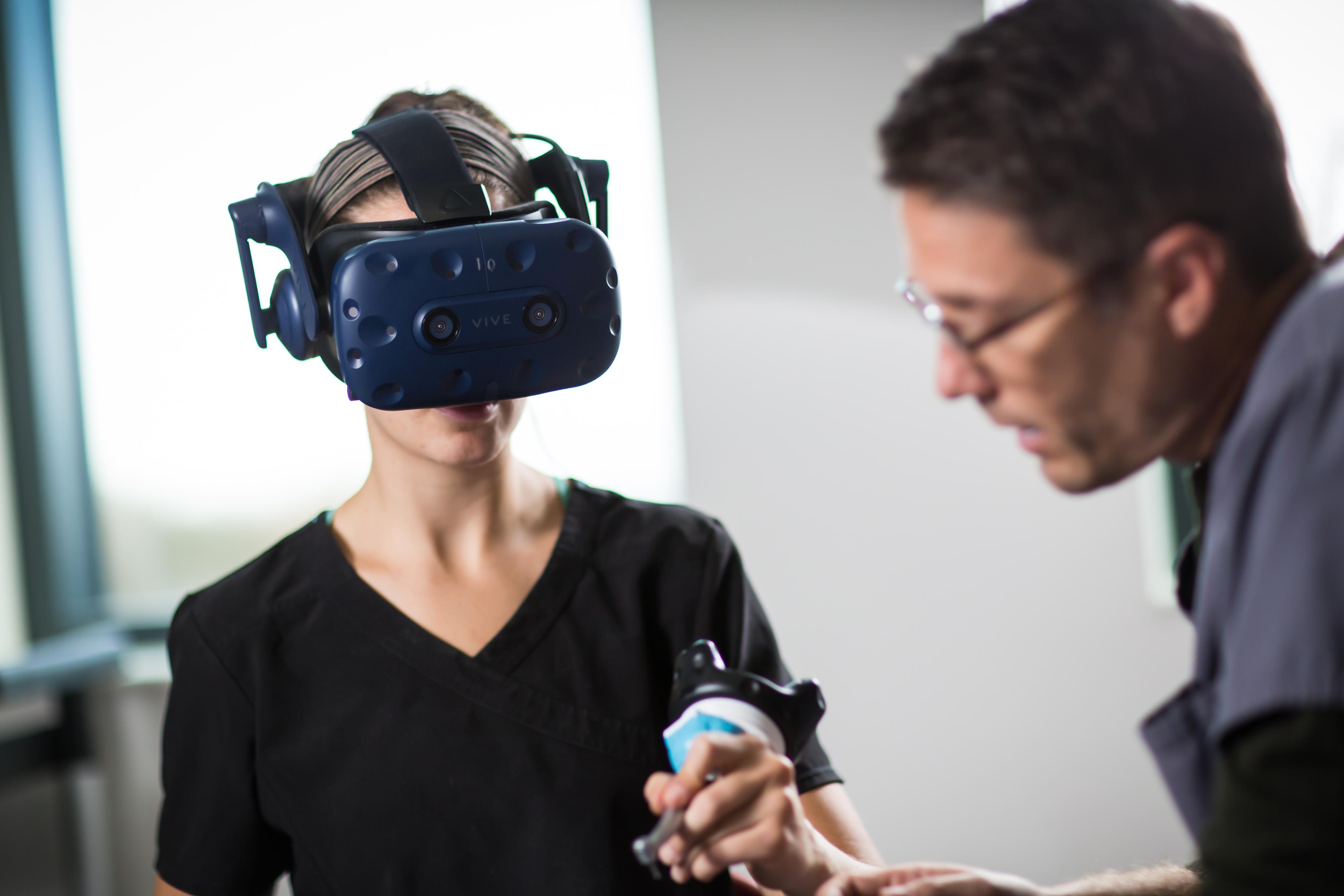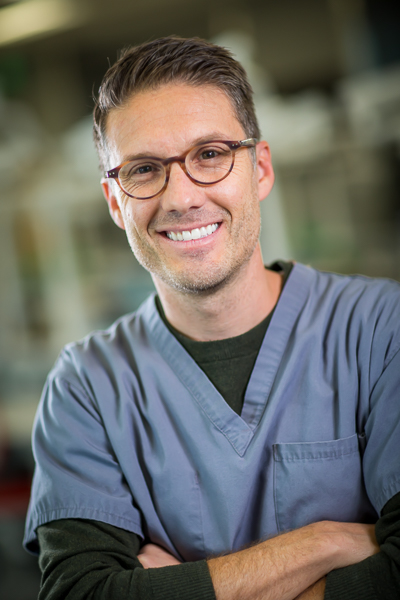

A New (Virtual) Reality
Mark Durham at the School of Dentistry is incorporating the exciting world of virtual and augmented realities into teaching and researches their impact on learning and making better humans.

Imagine your classroom is completely transformed into a dental clinic in the blink of an eye. You walk in through the doors and you have a patient sitting on your chair waiting for you to perform a root canal procedure. You pick up your tools and begin to drill. You are suddenly transported and shrunk down to the size of the tooth, you walk through these tiny chambers and spot all the cavities. No, this isn’t a Disneyland ride, but a virtual reality class at the School of Dentistry at University of Utah Health.
Mark Durham, DMD, has been one of the pioneers of noogenesis technology at the University of Utah, which is the evolution of intelligence through the use of technology. He has helped introduce new and innovative teaching at the School of Dentistry and collaborates with 15 different disciplines across campus incorporating virtual reality (VR) and augmented reality (AR). VR digitally recreates a real-life setting, while AR shows virtual elements of the digital world. Durham is currently working with a team of engineers and researchers to program courses at the Marriott Library and Eccles Health Sciences Library, from architecture and biosciences, to surgery and dental lesions.
“With VR, you can push more megabytes of information to the human brain. In the line of evolution, noogenesis is essentially making humans better humans,” says Durham.
The University of Utah has a long history of being one of the early developers of computer graphics and VR technology. “Some of the brightest people and minds work here, and that’s why I chose the U,” says Durham. He uses VR to teach a level 7000 graduate class, a five-week dental implant course, which could be the world’s first full-length dental course using this technology. Students learn about topics that include, fillings, crowns, extractions and periodontal control.
This digitally augmented learning strategy in implant dentistry allows dental schools to drastically lower educational costs and time spent learning. Dentistry is characteristically a hands-on skill, and VR allows for continuous tracking of hand movements with sub-millimeter accuracy of hand movement during practical learning. An unpublished study conducted by Durham showed that VR is a better medium for mentoring students on movements techniques than books, powerpoint, and expert videos. With the cost of VR declining, and its ability to create endless scenarios from scratch, this new and innovative way of learning is both ground-breaking and productive.
"My simple mind cannot think of a more powerful way to help humanity than to make human brains more intelligent. It’s a multiplier. It will allow our species to do things we haven’t been able to in the past."
Mark Durham